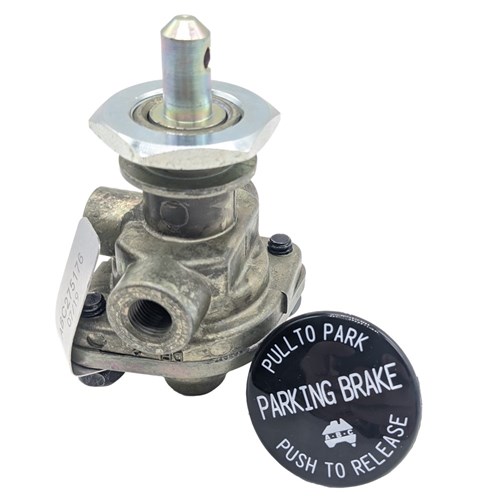Critical Aspects to Consider When Choosing Control Valves
Critical Aspects to Consider When Choosing Control Valves
Blog Article

Maximize Power Financial Savings and Comfort With Advanced Structure Automation Controls
In the realm of contemporary design and facility administration, the integration of innovative structure automation manages stands as a critical innovation. The convergence of innovation and sustainability has birthed a brand-new era where energy performance, convenience optimization, and operational streamlining are no more obtainable realities but far-off goals. By harnessing the power of automation, structures can adjust, respond, and evolve in ways that were as soon as inconceivable. The capacity for significant power cost savings and boosted convenience is not simply a possibility yet a pledge waiting to be met. This paradigm shift in structure monitoring holds the crucial to opening a world where ecological conscientiousness and resident well-being sympathetically exist side-by-side within the walls of our frameworks.
Power Efficiency Perks
Power effectiveness benefits can considerably decrease power intake and functional expenses in structures. Energy-efficient systems, such as sophisticated structure automation controls, can maximize the usage of resources like lighting, air conditioning, and home heating, leading to reduced energy expenses over time.
Moreover, boosted power efficiency can prolong the lifespan of structure tools and systems. By running extra efficiently, a/c systems, lighting fixtures, and various other building components experience much less deterioration, leading to minimized maintenance and substitute costs. Furthermore, energy-efficient structures often regulate higher home worths and rental rates, providing long-lasting financial benefits to proprietors.
Additionally, power effectiveness can boost occupant comfort and efficiency. Appropriately controlled indoor environments with optimum illumination and thermal problems create a more helpful and enjoyable work space, bring about enhanced staff member complete satisfaction and efficiency. In general, the power effectiveness benefits related to innovative building automation controls are multifaceted, incorporating cost financial savings, ecological stewardship, and resident wellness.
Enhanced Comfort Control
Enhancing convenience control in structure settings calls for a sophisticated assimilation of innovative automation systems for ideal owner health. By making use of sophisticated building automation controls, facilities can customize the interior setting to satisfy the specific demands and choices of passengers. control valves.
Improved comfort control surpasses standard temperature adjustments. It includes features such as customized setups, occupancy sensors, and all-natural light use to develop a responsive and vibrant atmosphere. By including these sophisticated controls, structures can not only enhance convenience but additionally enhance power performance by enhancing system operations based on actual tenancy and usage patterns. Ultimately, focusing on resident convenience through innovative automation systems causes a more pleasurable and healthier indoor environment.
Functional Efficiency Improvements

Moreover, the application of real-time surveillance and analytics tools allows structure operators to recognize energy inadequacies and operational anomalies without delay. By continually monitoring power usage patterns and system performance metrics, changes can be made in real-time to optimize power intake and ensure peak functional effectiveness. control valves. Additionally, integrating need response techniques into structure automation controls can even more boost operational efficiency by dynamically adjusting energy use based on grid conditions and prices signals
Indoor Environment Optimization
Reliable indoor climate optimization is a basic aspect of building automation controls, making sure owners' convenience and health while making the most of energy cost savings. By using sophisticated sensors and controls, building automation systems can continuously check and readjust temperature level, humidity levels, air quality, and ventilation to develop an optimum interior setting. Keeping comfortable and consistent problems not only enhances resident fulfillment however likewise improves performance and general well-being.
Indoor environment optimization likewise plays an essential function in energy performance. By fine-tuning air flow, cooling, and heating systems based upon real-time information and occupancy patterns, constructing automation controls can dramatically minimize energy usage - control valves. For dig this example, implementing approaches such as demand-controlled air flow and thermal zoning can assist minimize energy waste while guaranteeing that each area of the building receives the required conditioning.

Sustainable Setting Creation
Building automation controls not only optimize indoor climate problems for energy performance and resident convenience but likewise lay the structure for creating a lasting setting with calculated administration of systems and sources. By incorporating advanced structure automation modern technologies, such as sensors, actuators, and intelligent software program, centers can keep track of and change energy usage in real-time to decrease waste and minimize their carbon footprint. These systems enable anticipating upkeep, recognizing prospective problems before they rise and maximizing tools performance to improve longevity and performance.
In addition, sustainable atmosphere production expands past power management to incorporate water conservation, waste reduction, and interior air high quality enhancement. Building automation controls can control water use, discover leaks, and make sure appropriate waste disposal methods, adding to overall sustainability efforts. Furthermore, by controlling and keeping an eye on ventilation and filtering systems, these innovations improve occupant health and efficiency while lowering power consumption related to heating and cooling procedures.
Conclusion
To conclude, advanced building automation controls offer significant benefits in terms of energy cost savings, comfort control, operational effectiveness, interior environment optimization, and producing a sustainable atmosphere. By implementing these controls, structures can attain optimum performance while decreasing power intake and improving resident convenience. It is apparent that the usage of advanced automation modern technology is important article source in enhancing building efficiency and developing a more lasting future.
Energy performance benefits can significantly lower energy consumption and operational prices in buildings. On the whole, the energy performance advantages associated with advanced building automation controls are diverse, including expense savings, ecological stewardship, and resident wellness.
Additionally, including demand response techniques right into structure automation controls can better improve functional performance by helpful hints dynamically adjusting energy usage based on grid conditions and pricing signals.
Structure automation regulates not just enhance indoor environment problems for power performance and occupant convenience but also lay the foundation for developing a lasting environment with critical monitoring of systems and sources.In verdict, progressed structure automation regulates offer considerable advantages in terms of power savings, convenience control, functional performance, interior climate optimization, and developing a sustainable environment.
Report this page